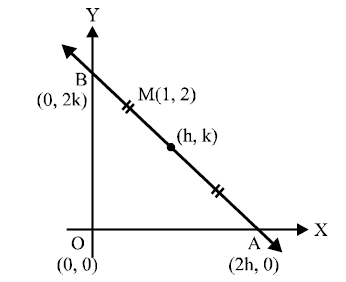Q.
If $\ell, m , n$ are three consecutive odd integers then the family of lines $\ell x - my + n =0$ passes through a fixed point $M ( a , b )$
Number of straight lines passing through $M ( a , b )$ and making an area of $2$ square unit with coordinate axes in the first quadrant, is equal to
Straight Lines
Solution:
